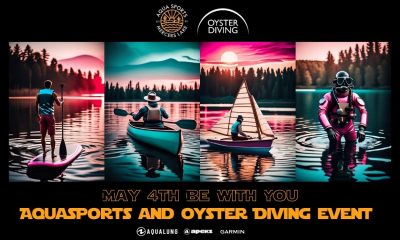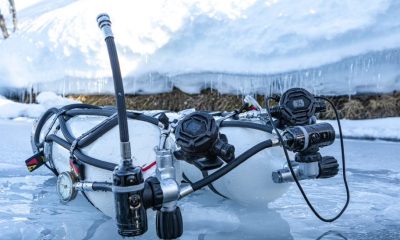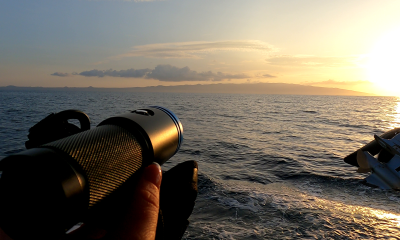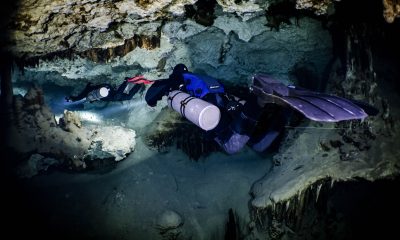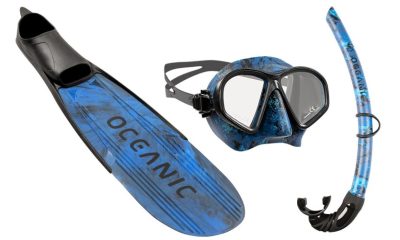News
Nauticam Announce the CMC-2 Macro Lens
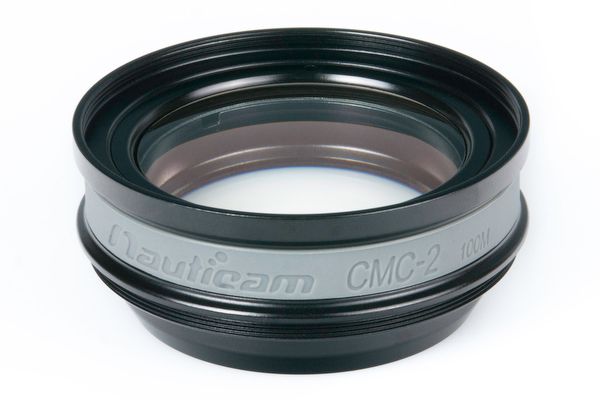
Easy to use with unmatched image quality
Nauticam has announced the immediate availability of a new macro imaging tool for compact and mirrorless interchangeable lens camera enthusiasts. The CMC-2. CMC-2 is a new macro lens designed to stand alongside the previous CMC-1, offering a less powerful lens choice for “larger” macro subjects that is noticeably easier to use.
 A little more than 18 months ago, Nauticam released THE Finest Macro Accessory Lens for Compact and Mirrorless Cameras ever made. This lens, CMC-1, became the benchmark other lenses are measured against with extremely high magnification and overall sharpness.
A little more than 18 months ago, Nauticam released THE Finest Macro Accessory Lens for Compact and Mirrorless Cameras ever made. This lens, CMC-1, became the benchmark other lenses are measured against with extremely high magnification and overall sharpness.
CMC-2 is a follow-up designed to give photographers using compact systems more magnification choices without sacrificing quality. New underwater photographers, or new system owners, will appreciate an easier to use lens with more accurate autofocus performance than stronger lenses can offer. More experienced users will find that CMC-2 is an ideal companion to CMC-1, allowing the perfect lens to be selected based on the subject size.
Improved Sharpness
During pre-production testing Nauticam noticed a stunning increase in overall image sharpness when comparing shots taken with CMC-2 to those behind a flat port (with no accessory lens at all). It became clear that with both compact cameras at full telephoto and mirrorless interchangeable lens systems the conversion lens markedly improved overall sharpness. This is counter intuitive, as conventional wisdom implies that any conversion lens reduces image quality. In this case, the flat port degrades overall sharpness, and the optical correction offered by the CMC-2 restores it. Simply put – an image taken underwater with CMC-2 is sharper than the same image taken with no accessory lens mounted. These are true water-contact corrective optics!
Breakthrough Lens Design
Prior to the development of the Nauticam accessory macro conversion lenses, achieving “super macro” underwater meant using tools that were designed for in air use. These tools simply do not take into account the physics of shooting in water. Thanks to Edward Lai, Managing Director of Nauticam, the CMC-2 takes a radically different approach: hundreds of engineering hours utilizing computer software to model an accessory lens that complements an entire system – camera, lens, port, air, and water – as a whole. This accounts for the critical air-water interfaces in a conversion lens design to achieve the best image quality possible. The improvements are stunning, measurable and a new standard in underwater macro imaging has been established with the Macro Convertor family.
 Uncompromising Optical Quality
Uncompromising Optical Quality
The CMC-2, like all Nauticam Macro Converters, is constructed from lenses precision crafted of specially formulated low dispersion optical grade glass, ground to the most demanding standards. This means greater sharpness and contrast on every shot and extraordinary resolution rivaling a macro lens used in air. Broadband anti-reflective coatings effectively reduce common optical issues such as chromatic aberrations, coma, spherical aberration, and field deformation associated with underwater macro photography using traditional magnifying lenses. This means superior light transmission, accurate color and no distortion and vignetting in the most demanding situations. These exceptional optics are assembled in a rugged hard anodized aluminum housing, and nitrogen purged during assembly to eliminate fogging.
Stunning Magnification
The CMC-2 is the less powerful of the two Nauticam Macro Converters designed for compact cameras, but magnification when compared to the capabilities of these cameras with no accessory lens is still very impressive. As an example, the popular Sony RX100 M4 can capture an image area 160mm (6.3 in.) wide at its full telephoto zoom position and minimum focus distance. With the addition of CMC-2, that image area is reduced to 55mm (2.2 in) wide. CMC-1 brings the minimum focus distance even closer, allowing a captured frame 36mm (1.4 in) wide.
Optimized for Autofocus
By utilizing a specially developed algorithm in the lens design process, the CMC-2 renders superior image quality over the full focusing range of the camera lens. This, combined with the high brightness and contrast of the image, allows the autofocus system of the camera to work well – often better than less powerful close focus lenses. Just as important are the out-of-focus (Bokeh) portions of the image that exhibit the same creamy smooth quality that photographers appreciate when shooting macro in air – all without color fringing common to traditional magnifying lenses.
Avoiding Diffraction
Due to the overall superior optical performance and precision focus of the CMC-2 it is possible to shoot larger apertures with excellent image quality. This avoids reaching the diffraction limit of high resolution sensors, and allows selective focus effects with narrow depth of field in super macro images.
Mounting and Using the CMC
The CMC-2 ships with the common 67mm threaded lens mount. The lens has a protruding rear element, designed to place the accessory optic as close to the camera lens port as is possible, providing the best overall image quality when used with flip lens adapters. A flush mount adapter ring is used when attaching CMC-2 directly to an underwater housing, and is included with the lens. Flip and Bayonet Lens Mounts are available as accessories.
Mounting Configurations
 |
 |
|
| The same Nauticam bayonet system designed with the Wet Wide Lens (WWL-1) is also compatible with CMC-2. (pn 81302.
The bayonet mounting system is the attachment method of choice for shooting both macro and wide angle on the same dive. |
Nothing beats the convenience of flip adaptors, allowing the accessory lenses to be flipped in place when needed, and conveniently swung out of the way for normal lens shooting.
A flip adaptor is the best mounting system for macro only dives, or camera systems that don’t support macro and wide angle lenses on the same dive (such as Canon G7X Mark II) |
New M67 Double Flip Holder for M67 Macro Ports, pn 25108: Allows both CMC-1 and CMC-2 to be used on the same dive for multiple macro framing options.
A word on magnification…
The industry standard macro lens magnification measure is a dioptric power, but dioptric numbers can be misleading. They are often multiple lenses stacked together, and the resulting stack doesn’t always yield the power of its individual components. In an attempt to make the power and utility of these lenses less confusing, nauticam offer a simplified magnification factor. CMC-2 offers 2.8x magnification (as an average) with compact cameras currently supported by Nauticam housings. For comparison, CMC-1 results in 4.5x average magnification.
Specifications
- Dimensions – 70mm (diameter) x 30mm (length)
- Weight – 0.22kg
- Depth Rating – 100m
- Model Number – 81302
- MSRP – $290
Attachment Accessories
Flip Lens Holder Accessories:
- 25101 M67 flip diopter holder for M67 macro ports
- 25108 M67 Double Flip Holder for M67 Macro Ports
- 25103 M67 flip diopter holder for M77 macro ports
- 25104 M67 flip diopter holder for 36121
- 25105 M67 flip diopter holder for 36137
Bayonet Mount Accessories:
- 83213 M67 to Bayonet Mount Convertor
- 83214 Bayonet Mount Adaptor for SMC/CMC
- 83215 M77 to Bayonet Mount Convertor
- 83222 Bayonet Mount Lens Holder for Arms
- 83223 Bayonet Mount Double Lens Holder for Arms
- 83227 Bayonet Mount Lens Holder for Inon Float Arms
USA: www.nauticam.com
Blogs
TRAVEL BLOG: Jeff Goodman Dives SOMABAY, Part 2

Day three of my trip to Somabay and we were spending the day on the Lady Christina and diving on the wreck of the Salem Express.
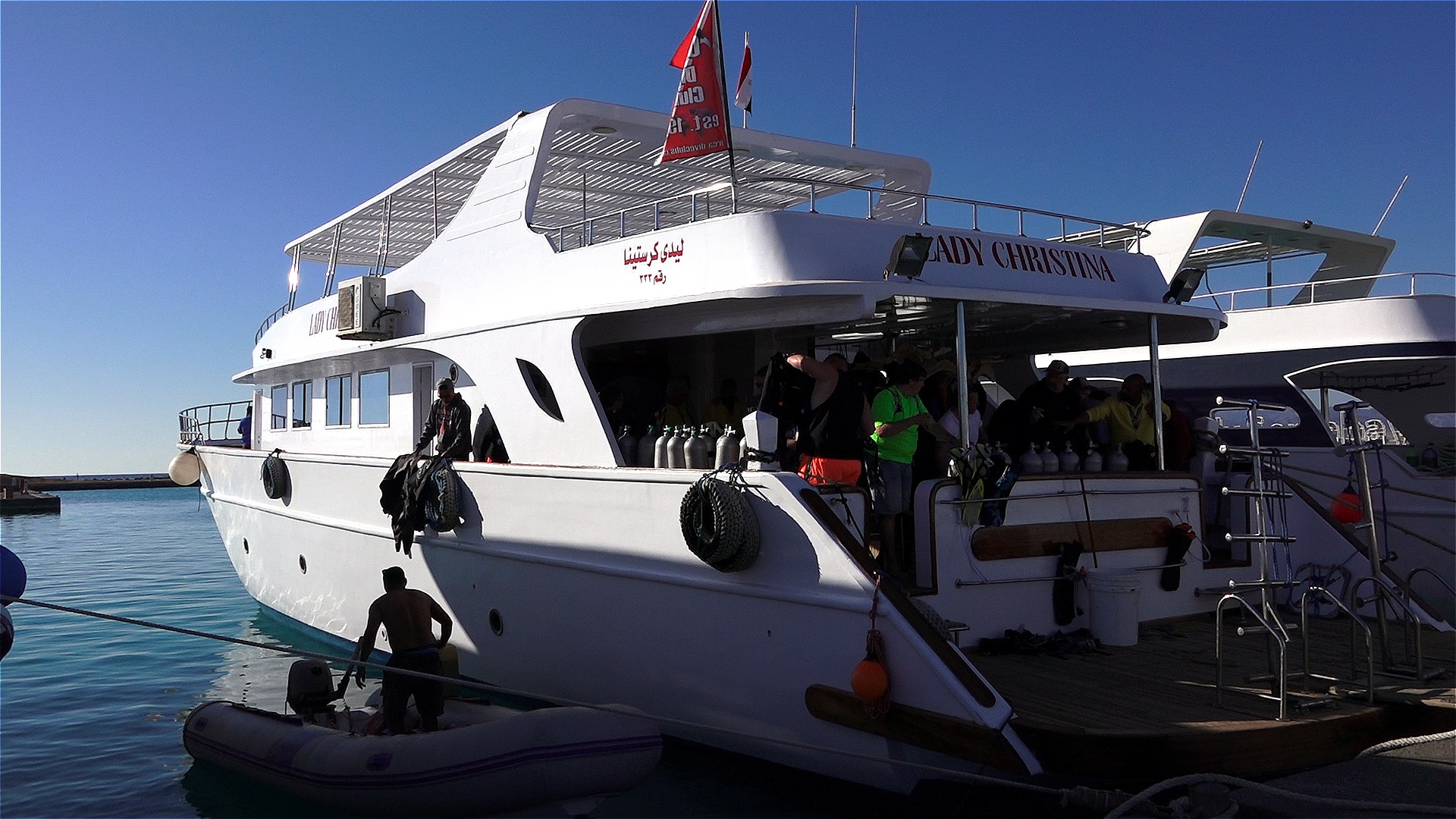
Diving wrecks for me is always one of mixed emotions. The excitement of diving a wreck is more than often tempered by the thought of loss of life when she sank. The Salem Express was a passenger ship and a roll-on/roll-off ferry travelling from Jeddah, Saudi Arabia to Safaga, Egypt. Most passengers were of poor class travelling home from their holidays while around 150 people were returning home from their pilgrimage to Mecca.

The ship struck a reef and sank within 20 minutes. Passengers were trapped below deck and the ship was filled with fear and panic.

The wreck area is strewn with personal belongings from the crew and passengers such as a transistor radio and a flat iron for clothes. A diver at sometime has put them in a prominent place to be seen.

Tragically only one life boat was launched while the others went down with the ship. More than 600 men, women and children lost their lives here.

It’s a stark reminder that the sea can be unforgiving and so when we dive on such wrecks we should do so with humble regard.
Returning to the surface, shoals of fish are gathered under our boat and seem to be welcoming us back into the light.
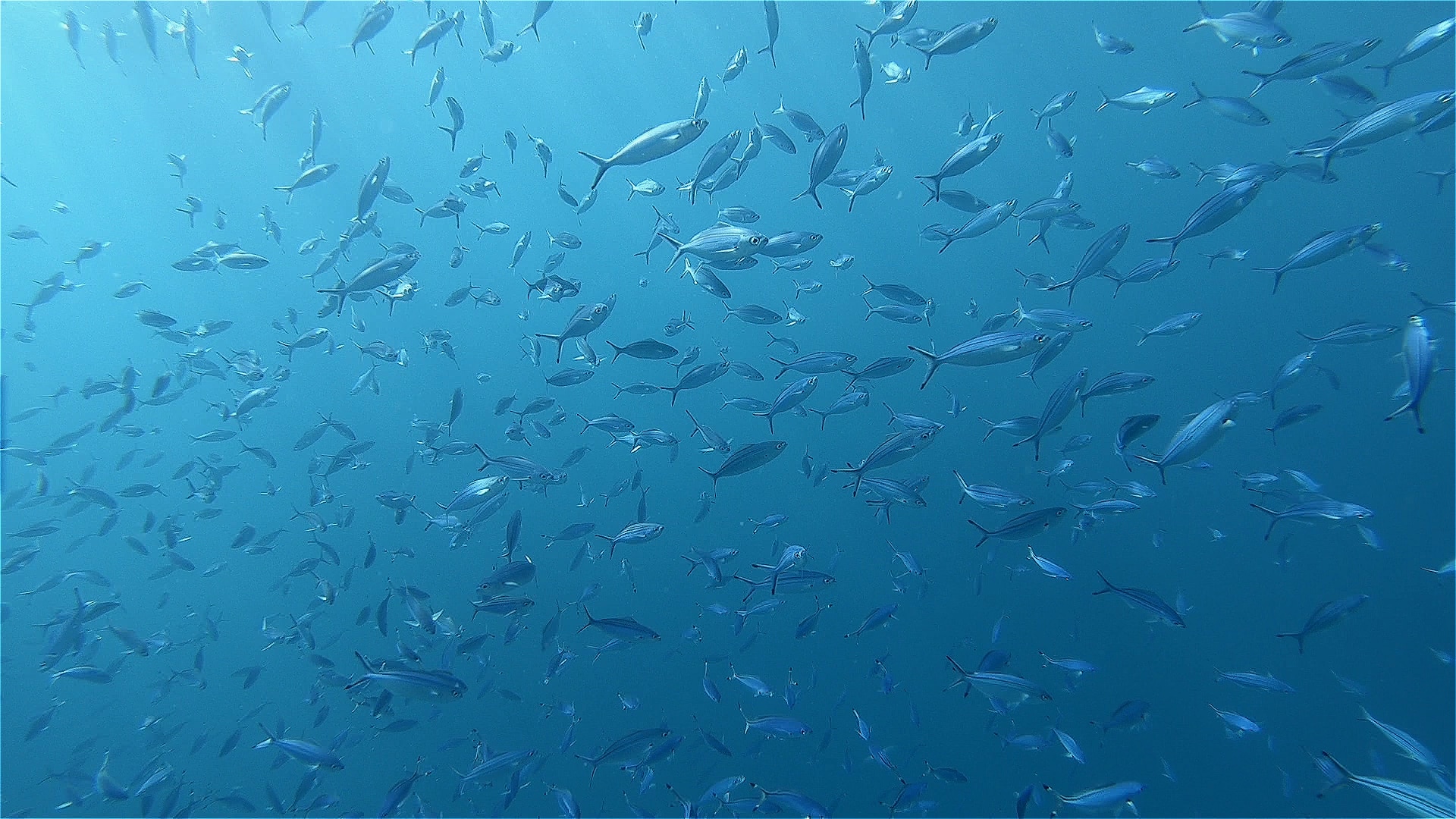
Back at the Breakers I sat in the dining area with a beer and a very good meal while my thoughts still remained with the day’s dive on the Salem Express.
Check in for part 3 tomorrow for Jeff’s last day of diving with Somabay on the off-shore reefs looking for turtles.
Book your next Red Sea dive adventure with SOMABAY! For more information, visit www.somabay.com.
Stay at the Breakers Diving & Surfing Lodge when you visit! For more information, visit www.thebreakers-somabay.com.
Find out more about ORCA Dive Clubs at SOMABAY at www.orca-diveclubs.com/en/soma-bay-en.
Blogs
TRAVEL BLOG: Jeff Goodman Dives SOMABAY, Part 1

For a week at the end of February I was invited to sample the diving with Orca Dive Club based at the Breakers Diving and Surfing Lodge by courtesy of SOMABAY.
Somabay covers an entire peninsula and is home to several resorts as well as residential compounds. Somabay caters for scuba diving as well as many other sports, including windsurfing, golf, sailing, go-carting, horse riding and many other activities.
All the activities are of a world-class standard and any or all of these can be booked directly from The Breakers.
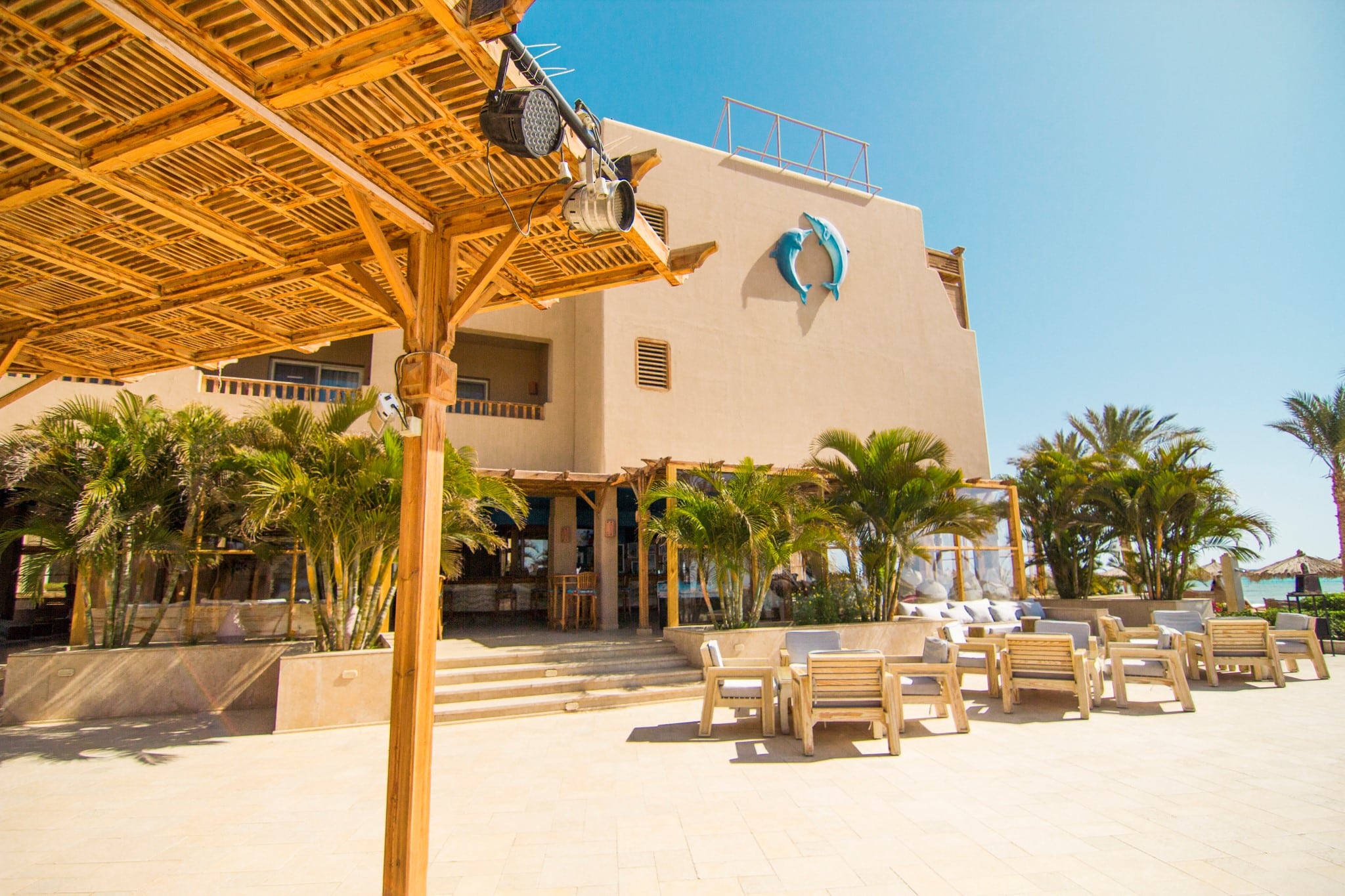
I took Easyjet from Bristol (UK) to Hurghada. Easyjet are not by any means my favourite airline but the flight was cheap and direct (except for the surprise extra £48 I was charged at the gate for my carry-on bag).
I was met at Hurghada airport by a driver and car and taken to the Breakers 28 miles (45Kilomaters) south along the coast. Once at the hotel I was too late for an evening meal and so a basic meal was delivered to my room. That and a beer from the fridge and I was fast asleep.
Early the next morning after breakfast I arrived for my rep meeting at the Orca Dive Center for 8.00am. I was immediately made to feel welcome, and after brief introductions I got some dive gear from the store, had a chat with my dive guide Mohamed and got ready to try the house reef situated at the end of a very long wooded pier where all diving gear and divers are taken out by buggies.
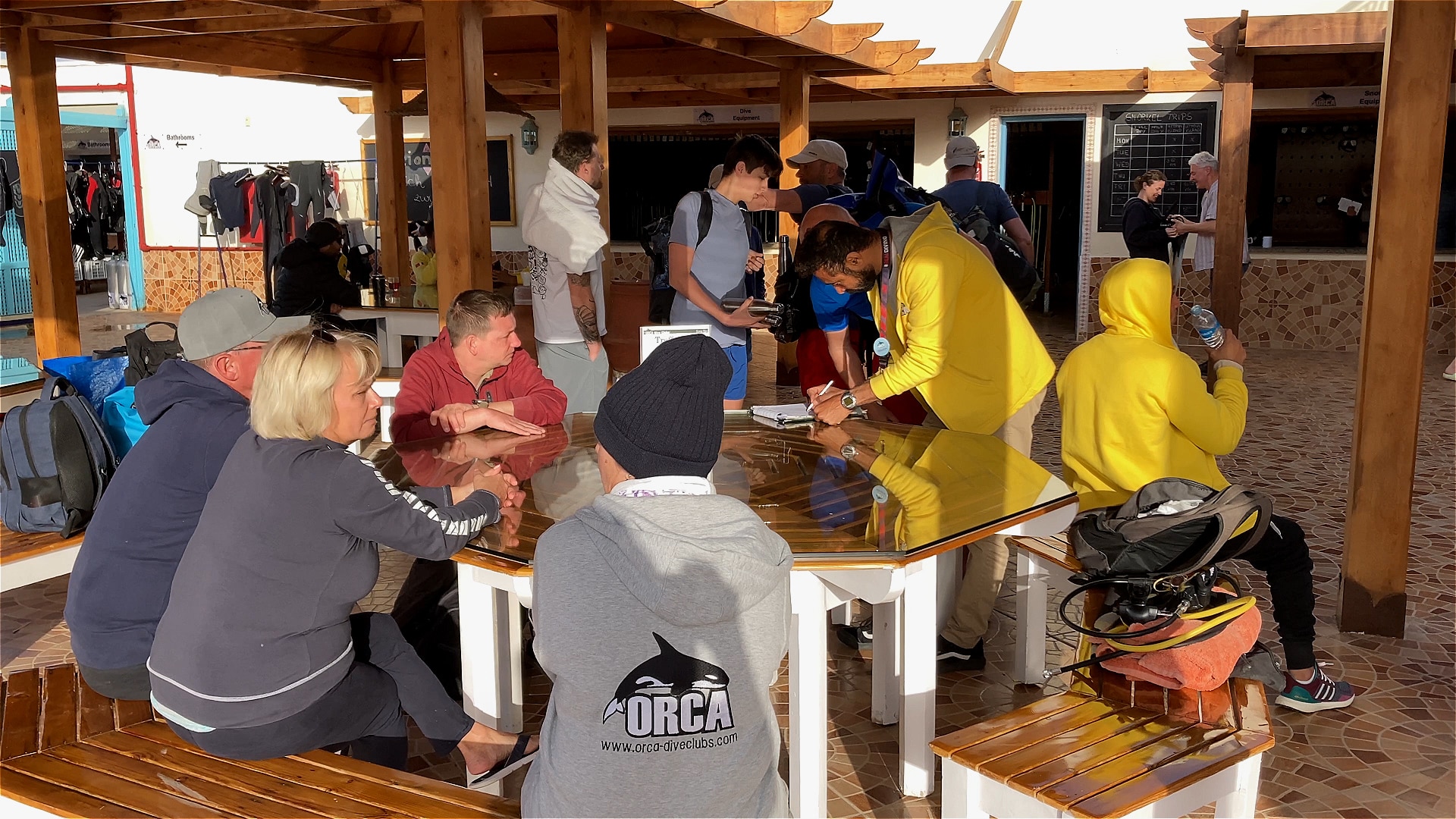
Once at the end of the pier, a helping hand from staff makes sure your gear is set and then it’s a short walk to the very end where you can either climb down a ladder of simply jump in the water next to the reef. The house reef extends both north and south giving a very easy and safe dive with plenty to see. At this time of the year the water temperature was a constant 22 degrees Centigrade and there was little or no current, so there were no issues in swimming back to the pier.
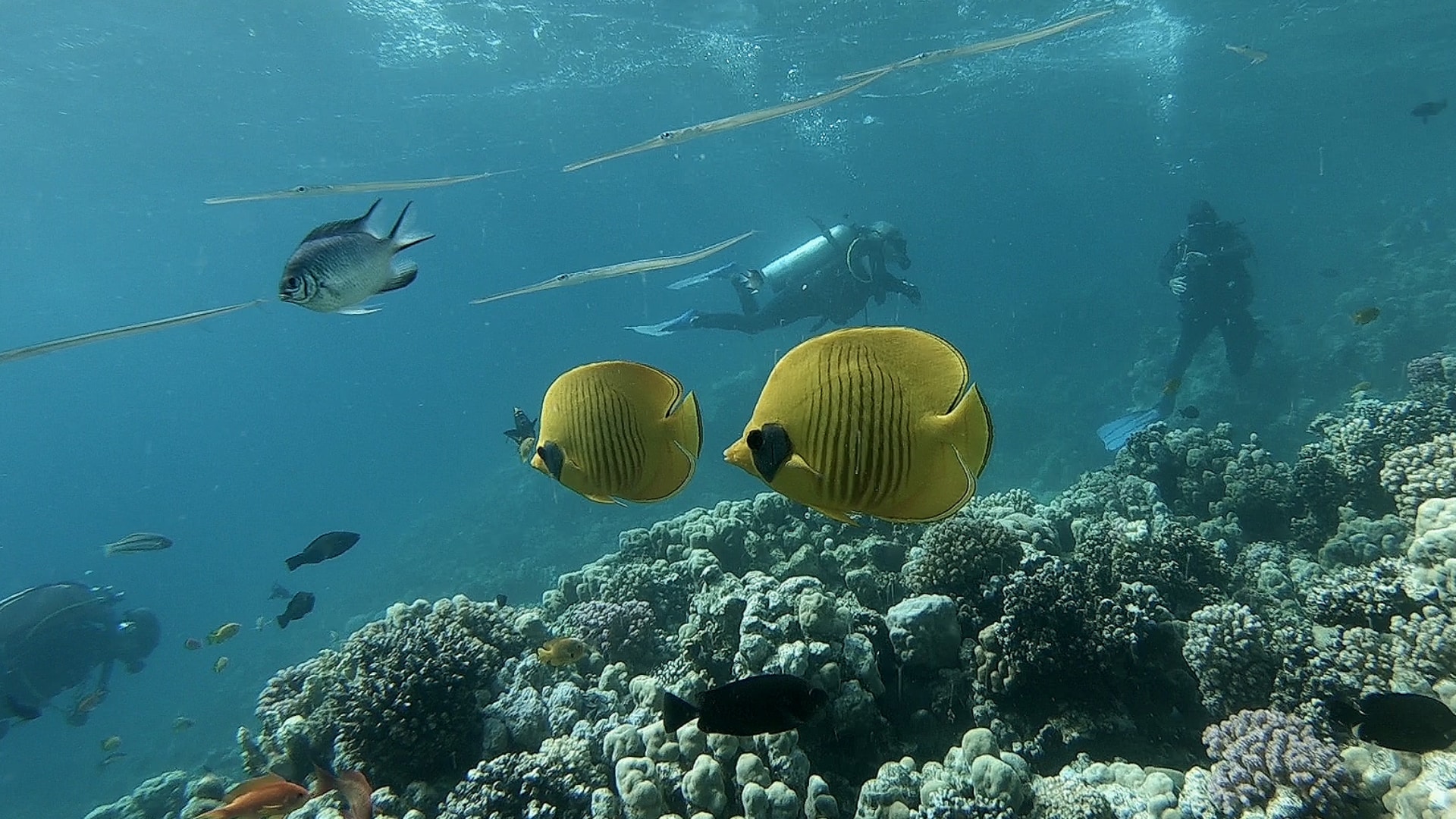
Quite a few divers were in dry or semi-dry suits, but being from the UK and used to the cold I found a 3mm wetsuit with a 3mm neoprene vest quite comfortable. Even after 50 years of diving I still find that first dive of a trip slightly nerving until I am actually underwater and then all becomes relaxed and I ease into auto diving mode. There was plenty to see with many of the Red Sea favourites along the way.
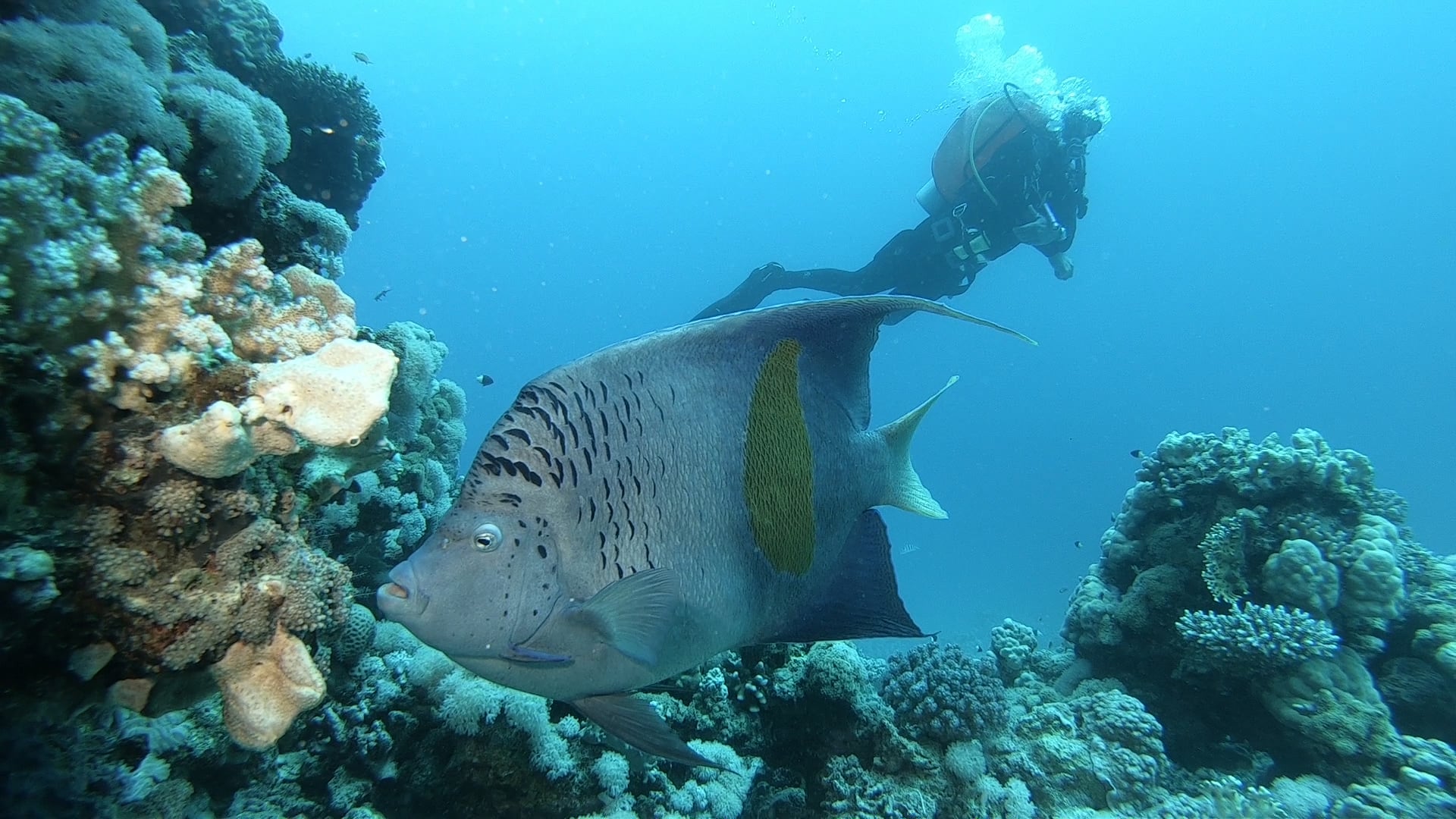
After the dive and a buggy ride back to the hotel for a very good buffet lunch I was back in the water, once again on the house reef for an afternoon dive.
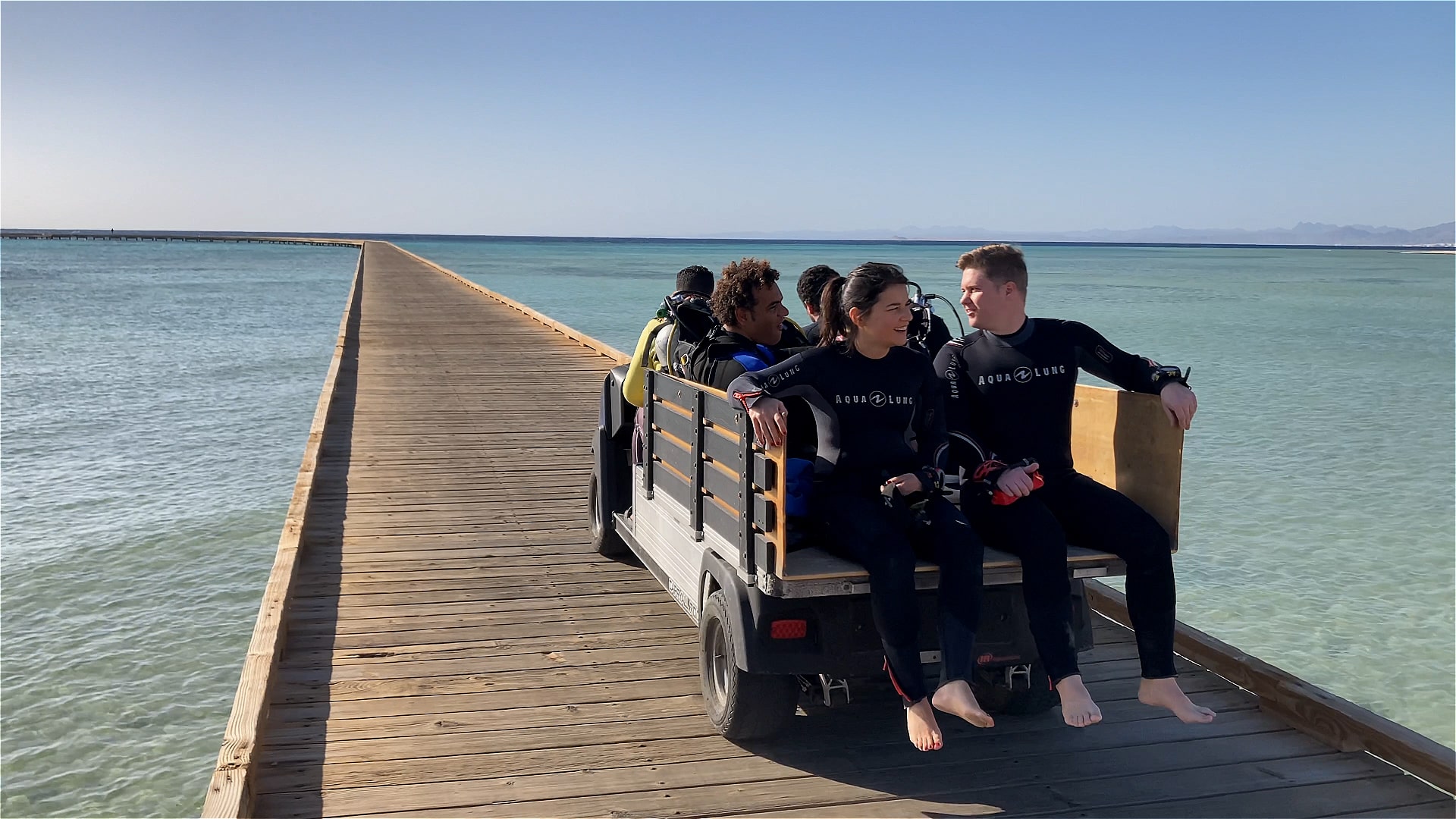
Check in for part 2 tomorrow when Jeff gets on a day boat and dives a few of the off-shore reefs.
Book your next Red Sea dive adventure with SOMABAY! For more information, visit www.somabay.com.
Stay at the Breakers Diving & Surfing Lodge when you visit! For more information, visit www.thebreakers-somabay.com.
Find out more about ORCA Dive Clubs at SOMABAY at www.orca-diveclubs.com/en/soma-bay-en.
-

 News3 months ago
News3 months agoHone your underwater photography skills with Alphamarine Photography at Red Sea Diving Safari in March
-

 News2 months ago
News2 months agoCapturing Critters in Lembeh Underwater Photography Workshop 2024: Event Roundup
-

 Marine Life & Conservation Blogs2 months ago
Marine Life & Conservation Blogs2 months agoCreature Feature: Swell Sharks
-

 Blogs1 month ago
Blogs1 month agoMurex Resorts: Passport to Paradise!
-

 Gear News3 months ago
Gear News3 months agoBare X-Mission Drysuit: Ideal for Both Technical and Recreational Divers
-

 Blogs2 months ago
Blogs2 months agoDiver Discovering Whale Skeletons Beneath Ice Judged World’s Best Underwater Photograph
-

 Gear Reviews2 months ago
Gear Reviews2 months agoGear Review: Oceanic+ Dive Housing for iPhone
-
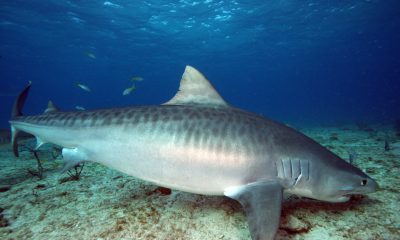
 Blogs3 months ago
Blogs3 months agoThe Thrilling Encounter with Tiger Sharks at Beqa Lagoon’s ‘The Colosseum’ with Coral Coast Divers




